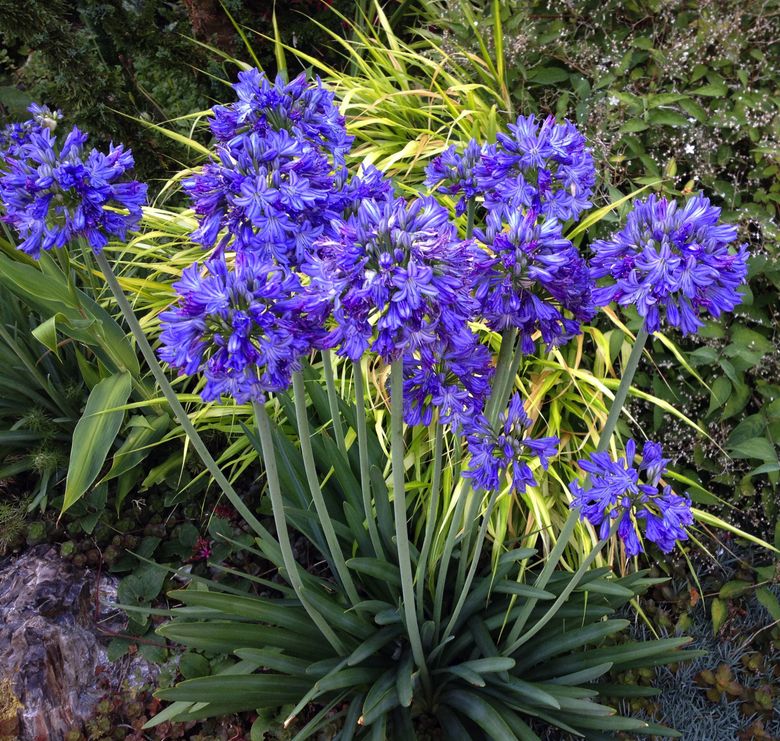Agapanthus Varieties: Choosing the very best for Your Landscape
Grasping the Art of Agapanthus Treatment: Necessary Actions for Healthy Development and Vivid Blooms
In the realm of gardening, the farming of agapanthus stands as a satisfying undertaking for those that look for to support these stylish blooming plants. From selecting the ideal variety to grasping trimming techniques, the journey towards growing prospering agapanthus plants is multifaceted and holds the key to unlocking the complete possibility of these botanical gems.

Selecting the Right Agapanthus Selection

When choosing the best Agapanthus selection for your yard, take into consideration elements such as climate suitability, bloom color, and growth practice. Agapanthus, typically referred to as Lily of the Nile or African lily, is available in a variety of colors varying from tones of purple and blue to white. Pick a bloom color that matches your existing yard scheme to develop a harmonious landscape. Additionally, take into consideration the environment in your region to guarantee the Agapanthus selection you choose can grow in your particular conditions. Some varieties are extra tolerant of cold temperatures, while others prefer warmer climates. Recognizing the growth behavior of different Agapanthus selections is crucial for appropriate placement within your garden. Some ranges have a clumping development behavior, ideal for borders or containers, while others have a more dispersing nature, suitable for ground cover or mass growings. By thoroughly evaluating these variables, you can select the perfect Agapanthus variety to improve the elegance of your garden.
Suitable Growing Problems
Thinking about the optimal environmental requirements is necessary for successful Agapanthus growing. Agapanthus prospers in well-draining soil with a slightly acidic to neutral pH level. When growing, pick a place that receives full sunlight to partial color. In hotter environments, offering some mid-day shade can prevent scorching of the leaves. Agapanthus plants are sensitive to chilly temperatures and should be safeguarded from frost throughout winter season.
To ensure healthy growth and vibrant blossoms, plant Agapanthus bulbs at a deepness of concerning 2-4 inches and room them 8-12 inches apart. Adding raw material, such as compost, to the dirt can boost drain and fertility, advertising robust origin development. Mulching around the base of the plants aids keep moisture and suppresses weed development. Routine watering is essential, specifically during the growing period, to maintain the soil constantly moist but not saturated.
Watering and Fertilizing Tips
Preserving appropriate dampness degrees and supplying crucial nutrients are key aspects in the treatment program for Agapanthus plants. When it comes to watering Agapanthus, it is critical to strike a balance. These plants prefer continually wet soil however are susceptible to root rot if overwatered.
Fertilizing Agapanthus is important for advertising healthy and balanced development and respected blossoms. Use a balanced plant food, such as a 10-10-10 formula, in the very early spring as brand-new growth arises. Visit This Link Repeat this application every 6-8 weeks throughout the growing period. Stay clear of excessive fertilizing, as it can lead to lavish foliage at the expenditure of blooms. Constantly follow the supplier's directions for correct dilution and application techniques. By complying with these watering and fertilizing pointers, you can guarantee your Agapanthus plants prosper and generate lively, long-lasting flowers.
Pruning Methods for Agapanthus
Trimming Agapanthus plants at the suitable times and with appropriate techniques is critical for preserving their health and wellness and advertising optimal development and flowering. The optimal time to prune Agapanthus is in late winter months or early spring prior to new growth emerges.
For flowered stems, wait until the flowers have actually perished and afterwards cut them back to the base. This not only cleans up the plant's look however likewise urges the development of brand-new flower buds. Deadheading spent flowers can additionally redirect the plant's power into generating more flowers instead than setting seeds. Nonetheless, if you desire to accumulate seeds for propagation, leave some flowers to mature and dry on the plant.
Bear in mind to you can try these out make use of tidy, sharp devices to make specific cuts and minimize the threat of introducing diseases. Agapanthus. Regular trimming will help maintain your Agapanthus looking cool and healthy and balanced while making sure a plentiful display of beautiful blooms
Managing Common Bugs and Diseases
After ensuring proper pruning techniques for Agapanthus, it is necessary to deal with common pests and conditions that can affect the health and vigor of these plants. One typical insect that impacts Agapanthus is the Agapanthus gall midget.
One more typical issue is fungal fallen leave place, which offers as dark lesions on the leaves. To stop fungal conditions, make certain good air circulation around the plants, prevent above watering, and remove any type of infected leaves quickly. Additionally, Agapanthus plants can suffer from origin rot if they are planted in badly draining dirt. To avoid this, plant Agapanthus in well-draining dirt and stay clear of overwatering. By being vigilant and taking prompt action versus illness and insects, you can assist your Agapanthus plants grow and produce vibrant blooms.

Conclusion
Finally, understanding the art of agapanthus treatment entails choosing the right variety, supplying ideal planting problems, proper watering and feeding, appropriate pruning techniques, and addressing usual pests and conditions. By following these crucial steps, you can make certain healthy and balanced growth and lively flowers for your agapanthus plants. Remember to routinely keep an eye on and my sources preserve your plants to promote their total wellness and durability.
To guarantee healthy and balanced growth and dynamic blossoms, plant Agapanthus light bulbs at a deepness of concerning 2-4 inches and space them 8-12 inches apart. By following these watering and fertilizing suggestions, you can guarantee your Agapanthus plants flourish and produce dynamic, resilient blossoms.
One usual pest that affects Agapanthus is the Agapanthus gall midget. Furthermore, Agapanthus plants can suffer from origin rot if they are planted in poorly draining pipes soil. By complying with these crucial actions, you can ensure healthy and balanced development and dynamic flowers for your agapanthus plants.